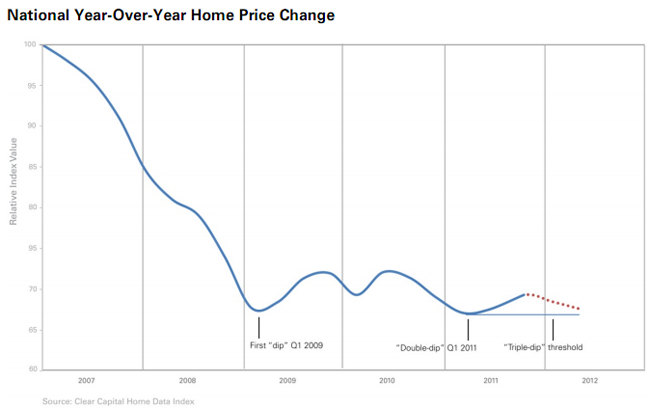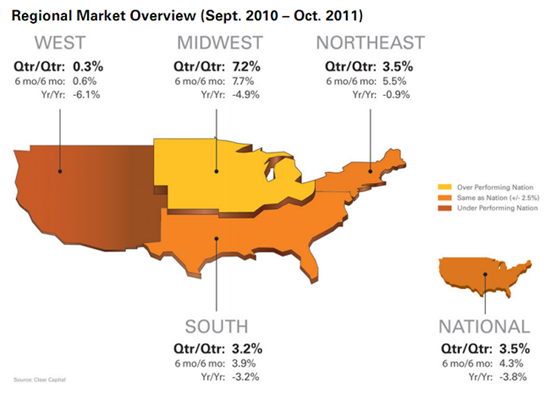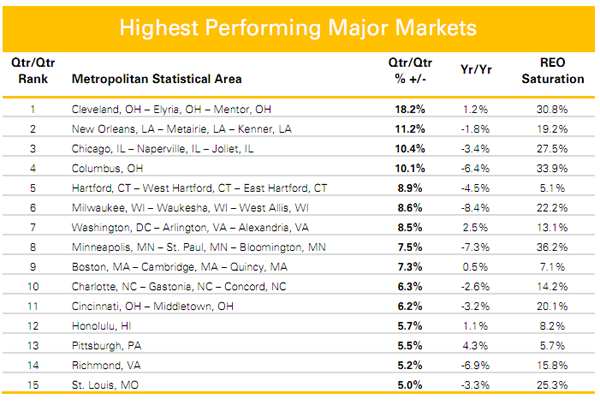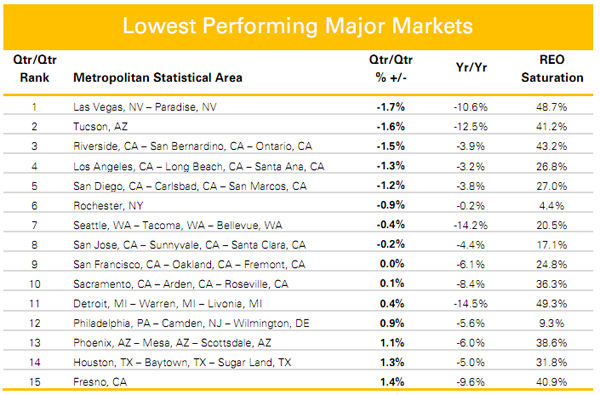Home price are continued their slow recovery from the double dip experienced in late 2010 and early 2011, but recent price performance indicates the market may be "flirting" with a possible triple-dip by early 2012. The Home Data IndexTM (HDI) for October which was released Thursday by Clear Capital shows a continued quarter-to-quarter softening of home price gains. Using a rolling average, prices in the current report increased by 3.5 percent compared to a 4.0 percent increase reported in September. On a rolling average basis, year-over-year prices have declined 3.8 percent.
As the nation enters the winter months, always a slower period for real estate sales, the HDI forecast models indicate an additional decline of 1.6 percent in U.S. home prices by year's end. If this prediction holds, it will mean a 1.0 percent decline for 2011 and a 1.4 percent gain since the first dip in 2009. "Barring any new shocks to the market, these modest price movements are anticipated to continue with little reason to expect big gains or losses through the next couple of years," the report states.
Under the above scenario, the report anticipates that home prices will continue their modest slide with additional declines through the first quarter of next year resulting in a national price change of -3.2 percent over the next six months. National prices may still see a positive yearly change since that rate of decline is much shallower than the 7.7 percent decline over the same period one year earlier. However, if the economy does fall into recession again, "there is strong potential for a triple-dip in the housing market." Still, the Clear Capital report says, since the first dip in home prices occurred in the winter of 2009 and the double-dip in the winter of 2010, "a dreaded 'triple-dip' is likely only to be flirted with, assuming there is not a major shock to the system in upcoming months.

One positive factor noted in the report was that distressed sales appear
to have a diminishing role in the housing market, accounting for only one in
four sales (25.3 percent.) This is a
drop of 9.2 percentage points since May and 15.6 points since the peak in Q1
2009.
Despite the strong rebound that began at the end of the double dip in January, the overall housing market remains in a tenuous state with positive forces such as record low interest rates and a huge selection of available homes, and negative forces like continued unemployment and the downward pressure of distressed sales cancelling each other out. "The net effect of these counter forces places the housing market in a suspended state with price movement limited to a standard seasonal ebb and flow."

Regionally the picture is somewhat uneven. The Midwest showed the strongest growth with
an increase of 7.2 percent from the first quarter of 2011 to the second. Year-over-year price change was -4.9
percent. Out of 50 markets covered by
the HDI, seven of the highest performing are in the region. The report names Cleveland as the highest performing
market with growth during the quarter of 18.2 percent. Of the 15 top performing markets only three
had REO saturation above the national average of 25.3 percent.

The worst performance was turned in by the West where prices gained a mere 0.3 percent over the quarter-to-quarter period and lost 6.1 percent year over year. Eleven of the 15 lowest performing markets are in the region including the worst, long suffering Las Vegas with quarter-over-quarter prices changes of -1.7 percent, year-over-year changes of -10.6 percent and REO saturation of 46.7 percent. All but four of the worst performing markets had REO saturations above the national average.

Both the Northeast and the South had positive quarter-over-quarter
numbers - 3.5 percent and 3.2 percent respectively. On the year-over-year basis the Northeast was
down 0.9 percent and the South posted a decrease of 3.2 percent.
The HDI report is derived from the most recent information available from recorder/assessor officers and the company's proprietary streaming market data. It reflects nationwide sales data including equally-weighted distressed bank owned sales.







